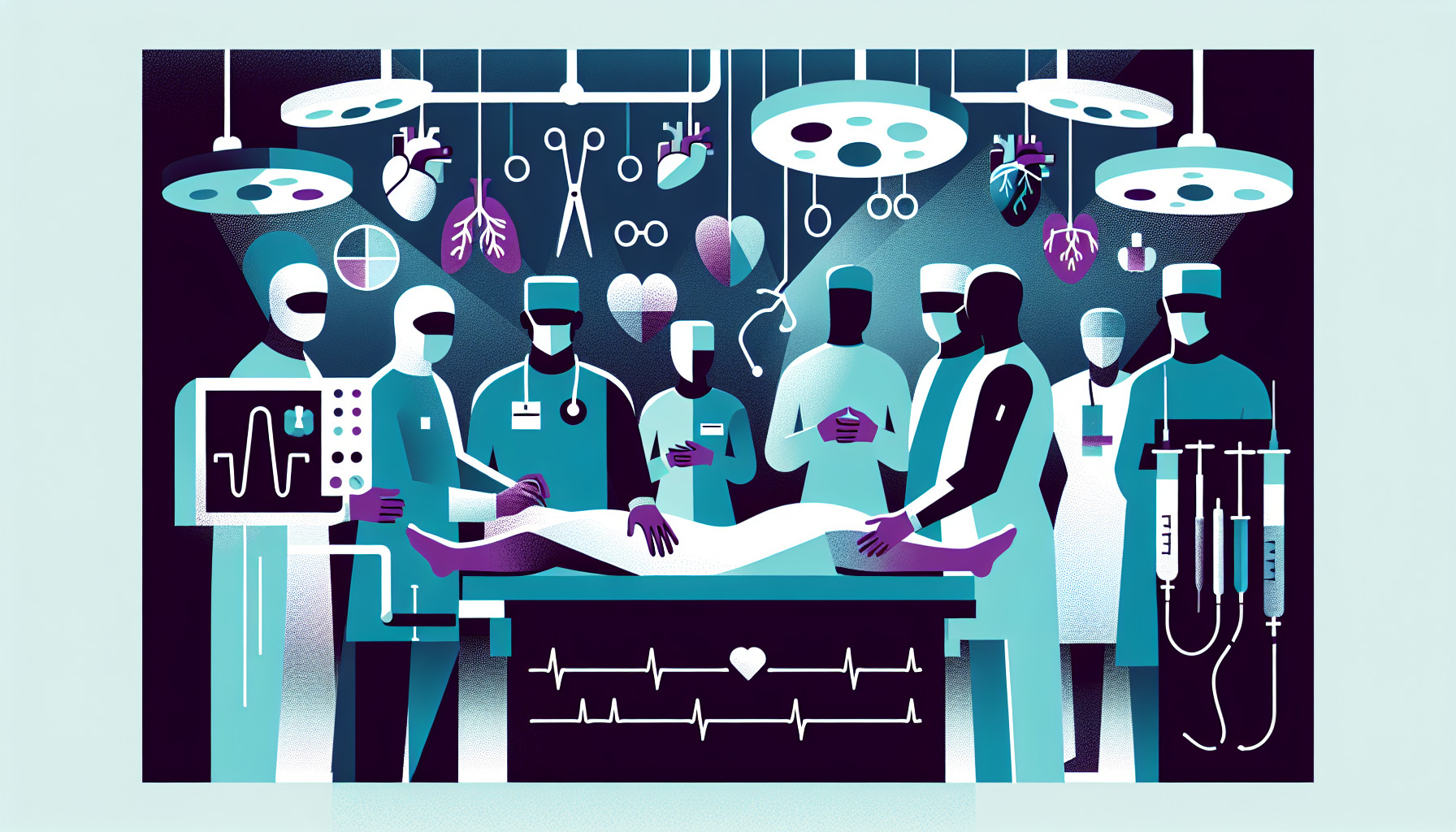Our Summary
This research article talks about the process of transplanting composite tissues (like a hand or face) from one person to another, which is known as vascularized composite allotransplantation (VCA). The issue with this procedure is that the patient’s body often rejects the new tissue, even with strong anti-rejection drugs. This can lead to several episodes of rejection within a year and can also cause harmful side effects. To solve this problem, the researchers are looking into using genetic engineering to reduce the need for these medications. They propose strategies like manipulating the interactions between immune cells to induce tolerance for the new tissue. They also suggest targeting specific immune cells before transplantation, which could be especially helpful for facial transplants. The researchers conclude that the use of genetic engineering tools like CRISPR/Cas9 could lead to better strategies that reduce the risk of tissue rejection.
FAQs
- What is vascularized composite allotransplantation (VCA)?
- What are the challenges associated with VCA and how are researchers trying to solve them?
- How could genetic engineering tools like CRISPR/Cas9 be used to reduce the risk of tissue rejection in VCA?
Doctor’s Tip
A doctor may tell a patient considering vascularized composite allotransplantation that researchers are exploring genetic engineering techniques to reduce rejection of the transplanted tissue. This could potentially lead to more successful outcomes with fewer side effects from anti-rejection medications. It’s important for patients to stay informed about new advancements in this field and discuss potential options with their healthcare provider.
Suitable For
Patients who may be recommended for vascularized composite allotransplantation (VCA) typically include those with severe disfigurement or loss of function due to trauma, burns, congenital abnormalities, or other medical conditions. These patients may have exhausted all other treatment options and have a strong desire to improve their quality of life and functional abilities. Additionally, patients who are psychologically stable and committed to following a strict post-transplant care plan are also good candidates for VCA.
Timeline
Before vascularized composite allotransplantation:
- Patient undergoes thorough evaluation by a transplant team to determine eligibility for VCA.
- Patient receives counseling and education about the risks and benefits of the procedure.
- Patient is placed on the waiting list for a suitable donor.
- Patient undergoes pre-transplant testing and evaluations to ensure compatibility with the donor tissue.
After vascularized composite allotransplantation:
- Patient undergoes intensive post-operative care to monitor for signs of rejection and infection.
- Patient is prescribed a regimen of immunosuppressive medications to prevent rejection of the transplanted tissue.
- Patient undergoes regular follow-up appointments with the transplant team to monitor for signs of rejection and adjust medications as needed.
- Patient undergoes physical therapy and rehabilitation to regain function and mobility of the transplanted tissue.
- Patient may experience episodes of rejection within the first year post-transplant, which may require adjustments to the immunosuppressive regimen.
- Researchers are exploring genetic engineering techniques to reduce the risk of rejection and improve long-term outcomes for VCA patients.
What to Ask Your Doctor
- What are the potential risks and complications associated with vascularized composite allotransplantation?
- How likely is it that my body will reject the transplanted tissue, and what steps can be taken to minimize this risk?
- What anti-rejection medications will I need to take post-transplant, and what are the potential side effects of these medications?
- Are there any alternative treatments or strategies, such as genetic engineering, that could help reduce the need for anti-rejection medications?
- What is the success rate of vascularized composite allotransplantation, and what factors can affect the outcome of the procedure?
- How long is the recovery process after a vascularized composite allotransplantation, and what kind of rehabilitation and follow-up care will be needed?
- How experienced is the medical team in performing vascularized composite allotransplantation procedures?
- What is the expected lifespan of the transplanted tissue, and will additional surgeries or treatments be needed in the future?
- How will the transplant impact my daily life, including function, appearance, and potential psychological effects?
- Are there any ongoing research or clinical trials related to vascularized composite allotransplantation that I should be aware of?
Reference
Authors: Kauke-Navarro M, Noel OF, Knoedler L, Knoedler S, Panayi AC, Stoegner VA, Huelsboemer L, Pomahac B. Journal: J Surg Res. 2023 Nov;291:176-186. doi: 10.1016/j.jss.2023.04.028. Epub 2023 Jul 8. PMID: 37429217
